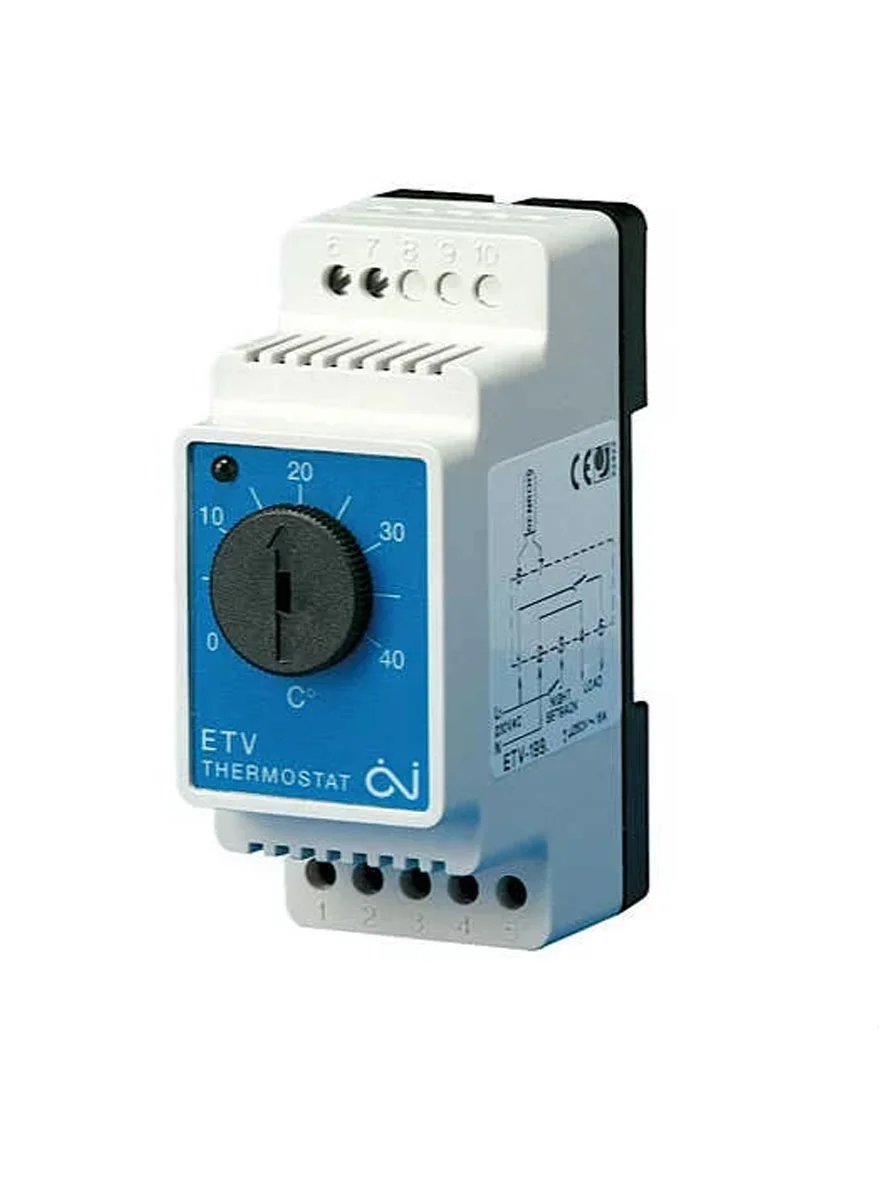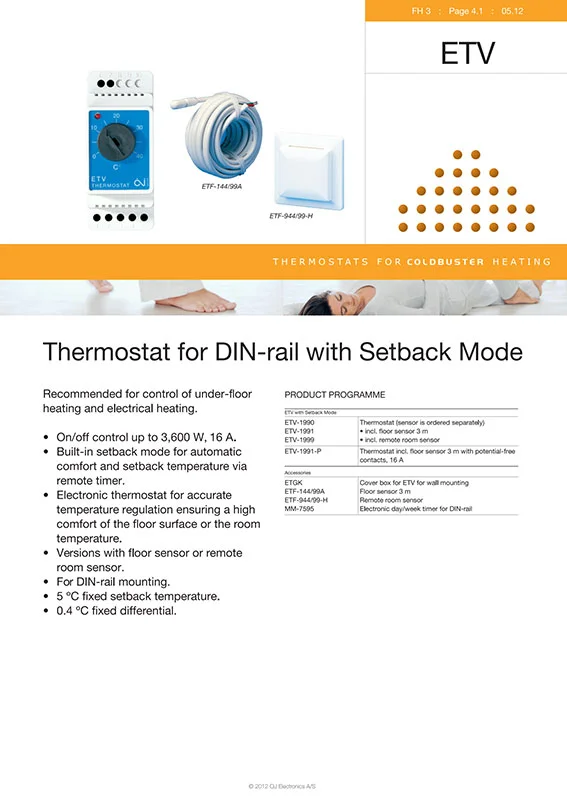PRODUCT RANGE
ETV manual Thermostat DIAL
$169.40 (Prices Include GST)
(Prices Include GST)
Ideal for use with Home automation systems like CBus and Dynalite, the timing is controlled by the home automation system and the temperature regulation is controlled by the thermostat. As the thermostat is mounted on a distribution board in the comms room, it is limited to controlling the heating according to the floor probe temperature.
Note: 3m floor sensor or remote room sensor included.




